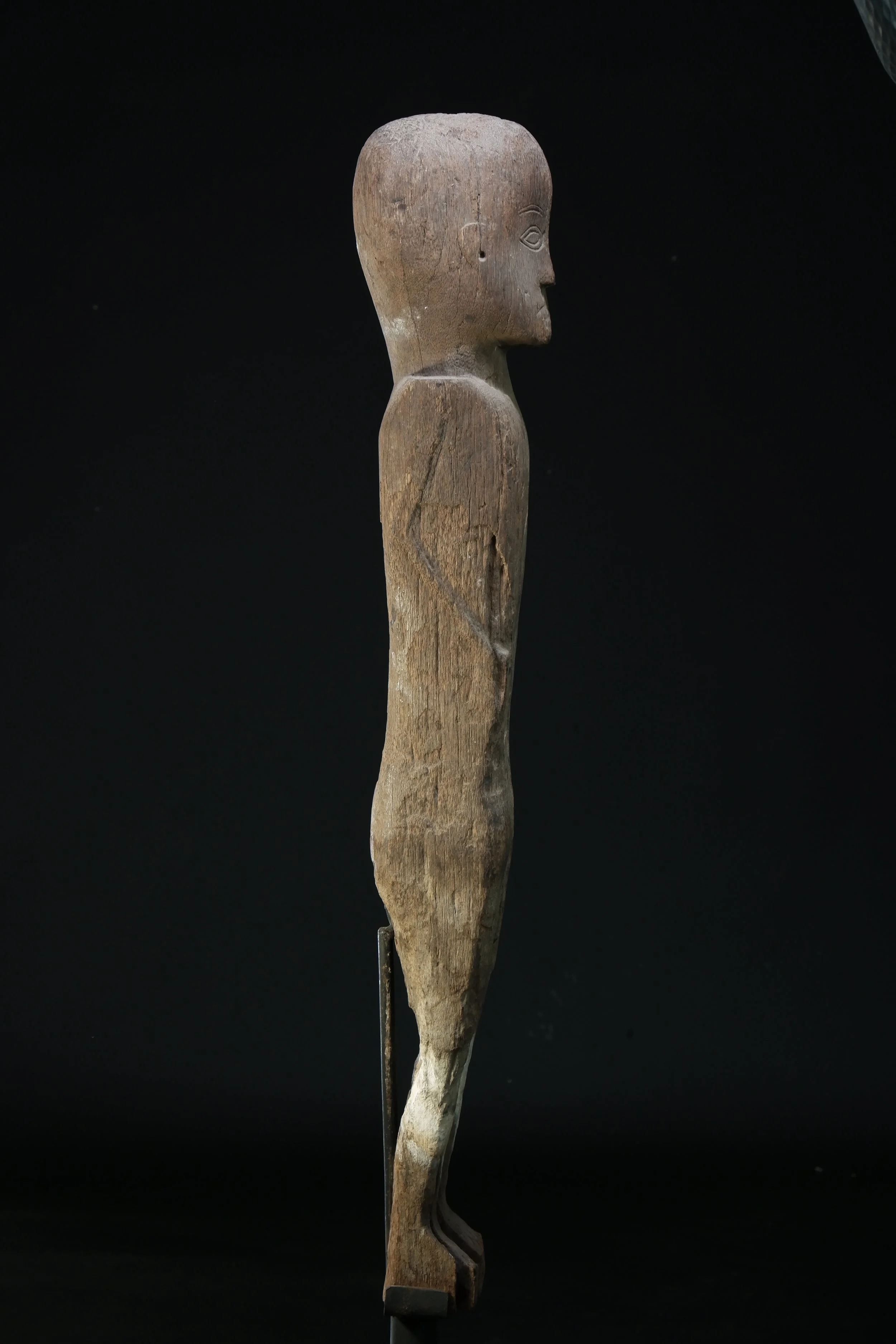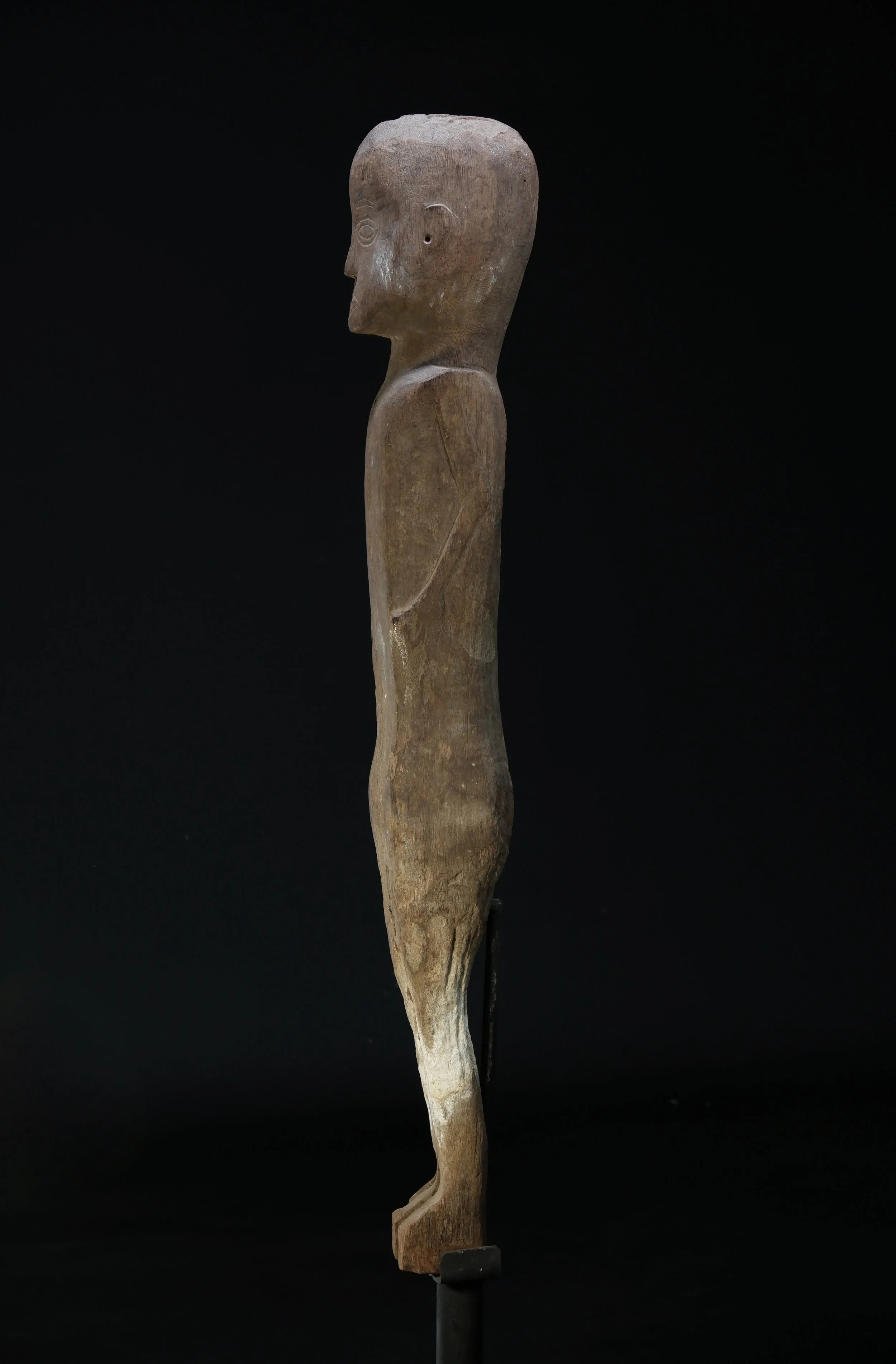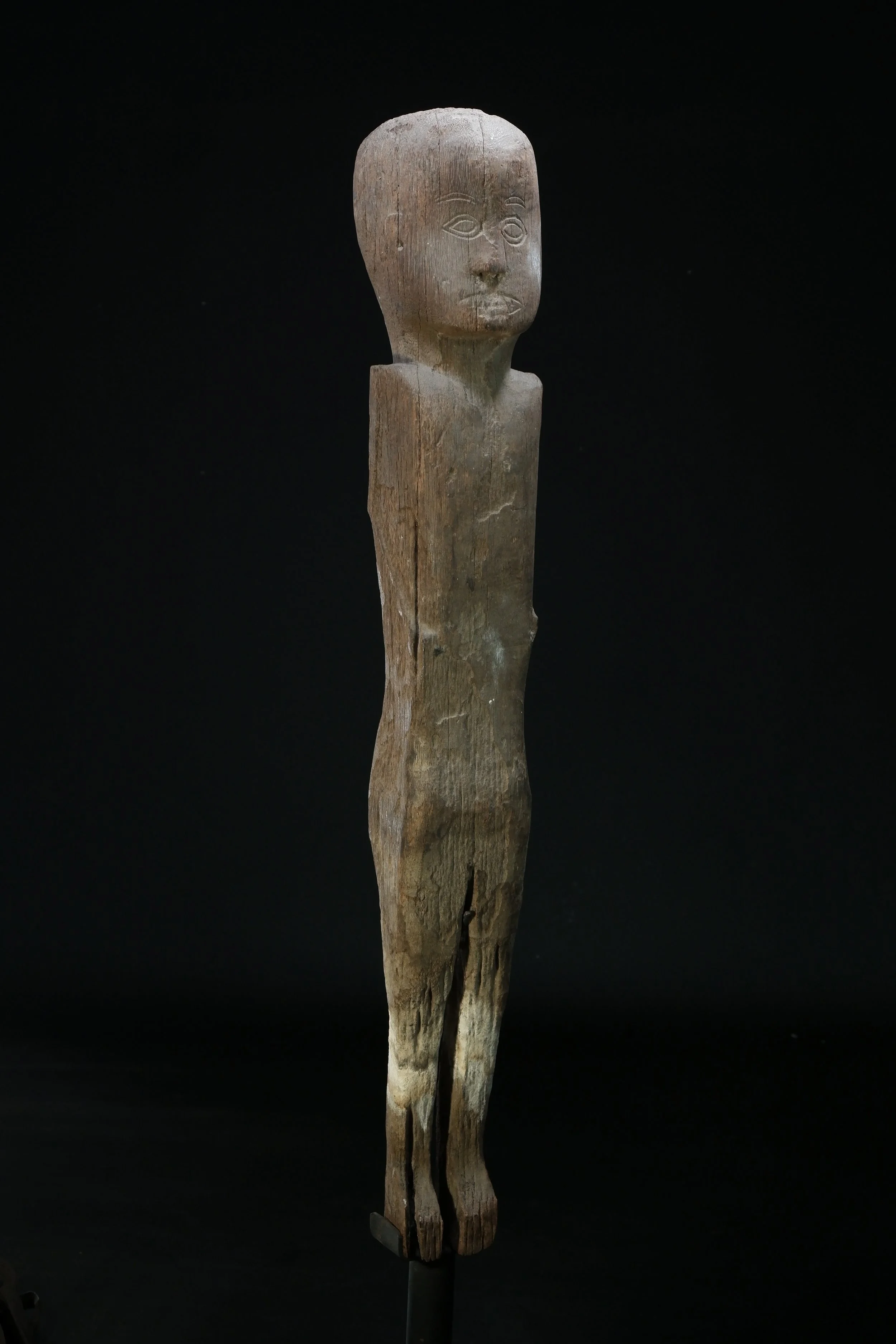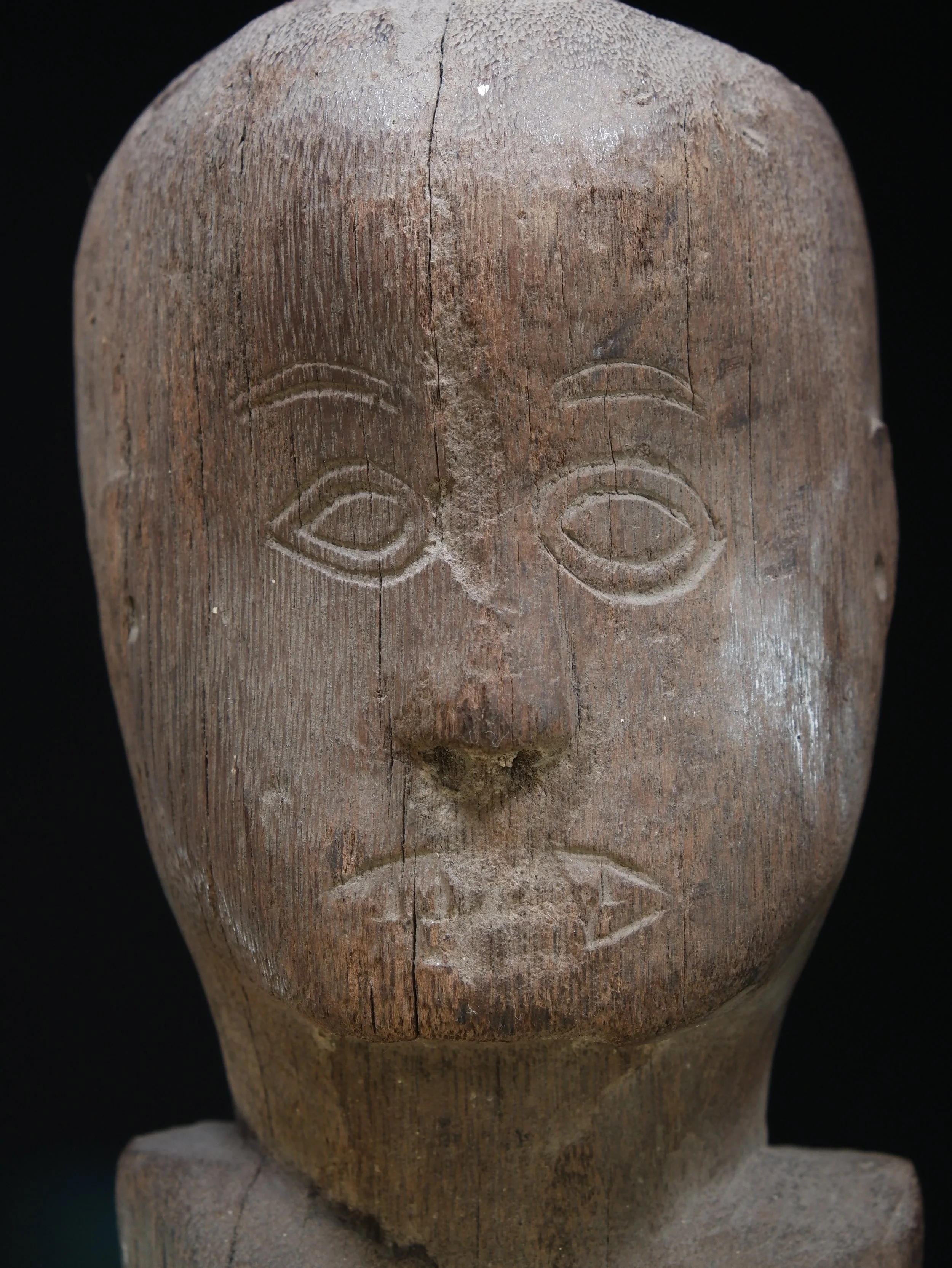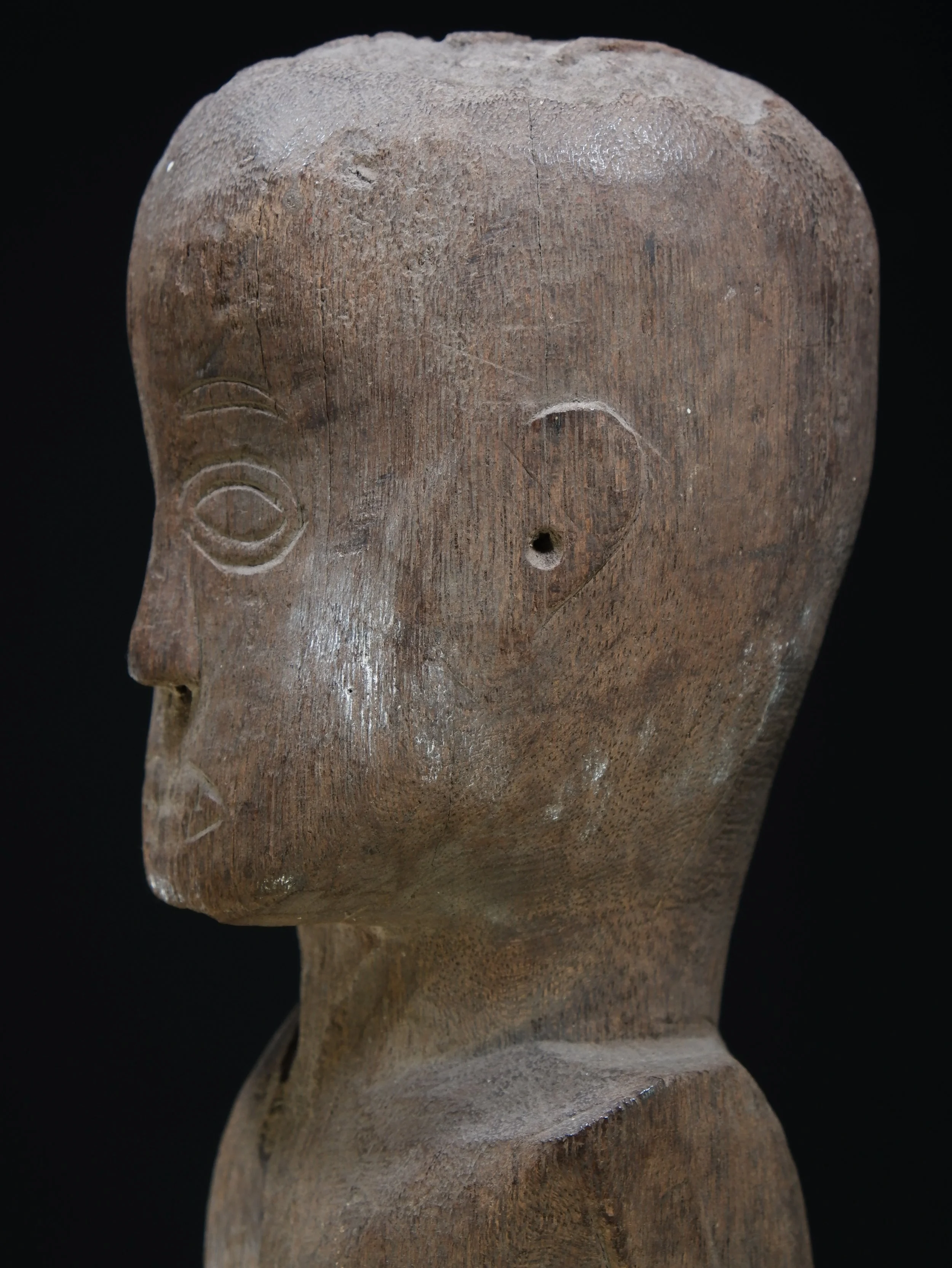Antique Hampatong - Ritual Ancestral statue pole - Ahe tribe - Dayak - Borneo
Antique Hampatong - Ritual Ancestral statue pole - Ahe tribe - Dayak - Borneo
SOLD
This genuine wooden ritual statue, measuring 24 inches (62 cm) in height, originated from the Ahe culture, a subgroup of the Dayak people who once resided in the central region of Kalimantan, known as Central Borneo. Statues of this type played a fundamental role in the shamanic healing rituals that were practiced by this community.
The Ahe, an indigenous ethnic group with their primary language known as Kendayan, possessed a rich cultural heritage deeply intertwined with their customs, rituals, and artifacts. Within their society, these rituals held great significance, particularly in times of illness within the family. When a family member fell ill, a ritual sacrifice was performed to seek healing. During this ceremony, rice was ceremoniously scattered upon the statue, and sacred water was poured as an offering to their ancestors. Prayers were recited, beseeching the recovery of the afflicted individual.
The Ahe people, as a subgroup of the Dayak, had a unique cultural identity characterized by their customs and traditions, with these artifacts serving as a tangible link to their rich heritage.
The statue, while in generally good condition, exhibits some signs of wear and erosion on certain parts. Additionally, there is a whitish band present on the lower section, which adds to its character and history.


